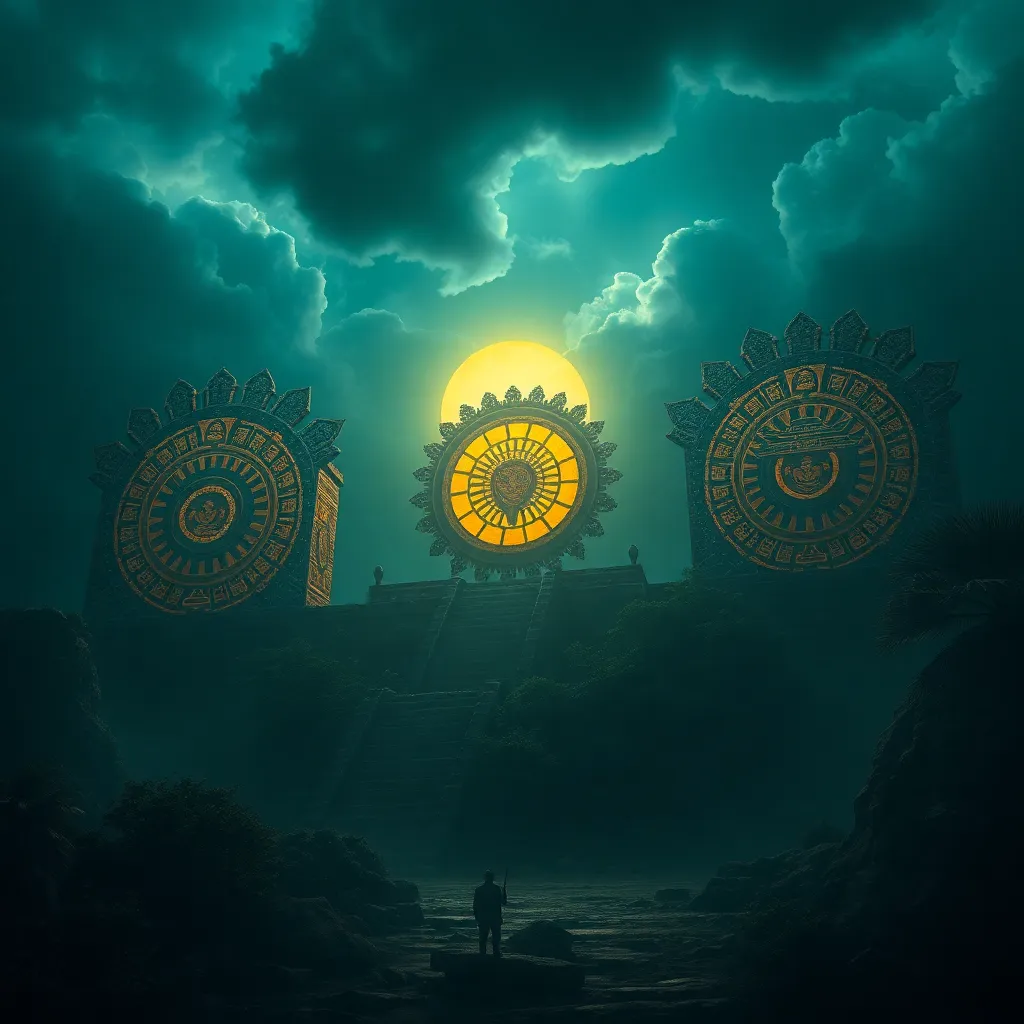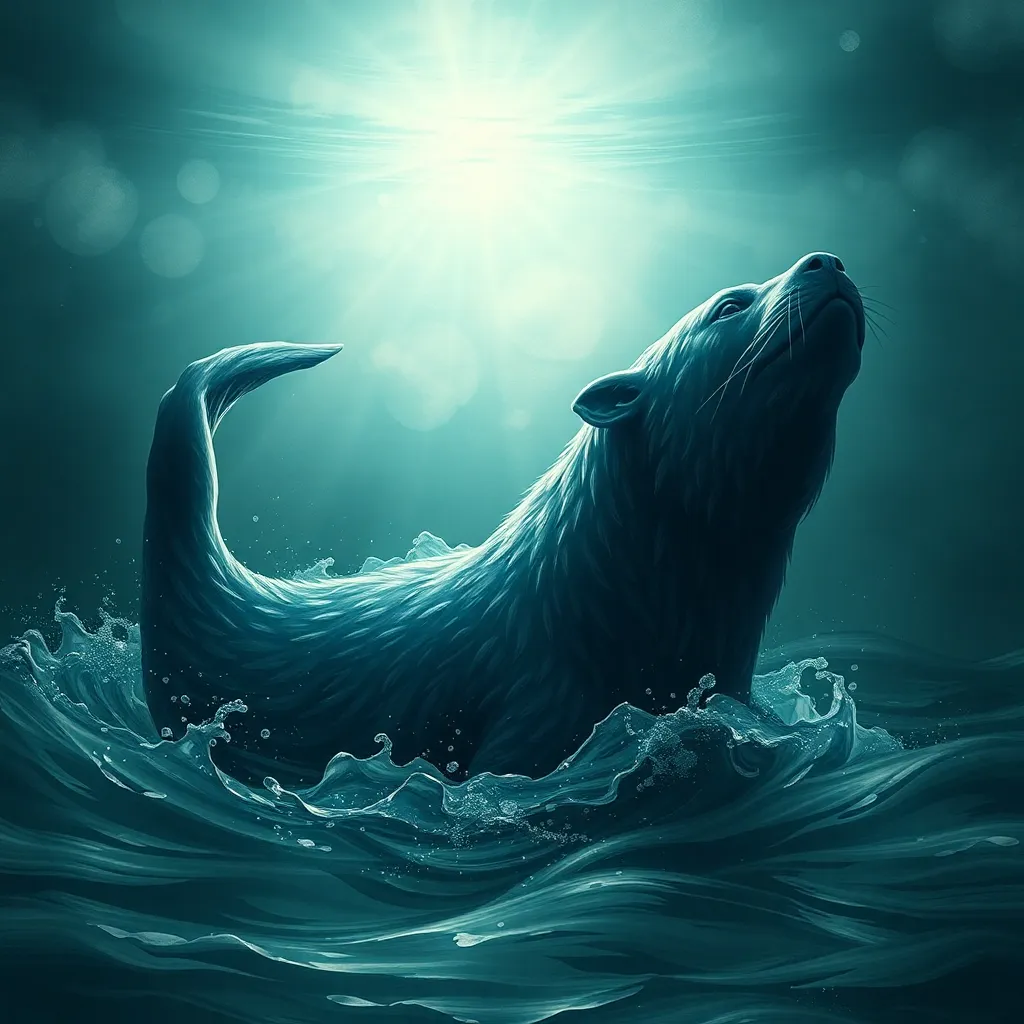The Four Suns and Cipactli: A Journey Through Aztec Creation Myths
I. Introduction to Aztec Creation Myths
Mythology played a pivotal role in the Aztec culture, serving as a means to explain the universe’s origins, the nature of existence, and the human condition. These narratives were not merely stories; they were woven into the fabric of daily life, influencing rituals, social structures, and the relationship between the people and their gods.
The Aztec creation myths are rich and complex, providing various narratives that illustrate the cosmos’s formation and the gods’ interactions. Among these, the concept of the Four Suns stands out as a significant theme, reflecting the cyclical nature of existence and the continuous struggle between creation and destruction. Central to these narratives is Cipactli, the earth monster, whose mythological significance paves the way for understanding the subsequent ages of the Suns.
II. Cipactli: The Earth Monster
Cipactli, often depicted as a crocodile or a monstrous creature, is a fundamental figure in Aztec mythology. This primordial being embodies chaos and represents the earth itself. According to the myths, Cipactli was the first entity to exist, a manifestation of the earth before creation began.
In the creation narrative, Cipactli plays a crucial role. The gods, seeking to create the world, needed to subdue this giant creature. They ultimately defeated Cipactli, and from its body, they fashioned the earth. This act symbolizes the transformation of chaos into order, as the gods carved out land from Cipactli’s remains.
Symbolically, Cipactli represents the duality of creation and destruction. While it is a source of life (the earth), it also embodies the potential for chaos, reminding humanity of the delicate balance maintained by the gods.
III. The First Sun: Tezcatlipoca and the Age of Jaguars
The First Sun is known as the Age of Jaguars, ruled by the god Tezcatlipoca, the god of the night sky and conflict. This era was characterized by darkness and ferocity, as the jaguars roamed freely, embodying the fierce nature of the time.
Tezcatlipoca’s relationship with Quetzalcoatl, the feathered serpent god, was fraught with conflict. Their rivalry symbolized the struggle between opposing forces—darkness and light, chaos and order. The First Sun came to an end when Tezcatlipoca, in a fit of rage, caused a great cataclysm that annihilated the jaguars and the humans of that age.
This destruction served as a crucial turning point, illustrating the themes of conflict and the cyclical nature of existence within the Aztec worldview.
IV. The Second Sun: Quetzalcoatl and the Age of Winds
The Second Sun, known as the Age of Winds, was characterized by Quetzalcoatl’s benevolence and the creation of humanity. In this age, Quetzalcoatl used his powers to shape humans from maize, gifting them with life and intellect. This act underscored the significance of maize in Aztec culture, symbolizing sustenance and survival.
However, the Second Sun also faced its downfall. Humanity, in its arrogance, began to neglect the gods, leading to a series of catastrophic events. When the humans failed to honor Quetzalcoatl, he unleashed fierce winds that destroyed them, leading to the end of the Age of Winds. This narrative emphasizes the importance of sacrifice and reverence for the gods, as well as the consequences of hubris.
V. The Third Sun: Tlaloc and the Age of Rain
The Third Sun, known as the Age of Rain, was ruled by Tlaloc, the god of rain and fertility. This era was marked by abundance, as the rains nourished the earth, allowing crops to flourish and sustaining the Aztec civilization.
Tlaloc’s influence on agriculture was profound, as he provided the vital waters necessary for life. However, this age also faced catastrophic events, including floods and storms that wreaked havoc on the earth. Ultimately, the Third Sun was destroyed when Tlaloc’s anger culminated in a great flood, wiping out the humans who had failed to pay homage to him.
This narrative illustrates the relationship between the gods and humans, showcasing the importance of balance and respect in sustaining life.
VI. The Fourth Sun: Tonatiuh and the Age of Movement
The Fourth Sun, known as the Age of Movement, is associated with Tonatiuh, the sun god. This era is considered the current age, characterized by the vibrancy of life and movement. Tonatiuh represents the sun’s power, and his well-being is directly tied to human sacrifice, which the Aztecs believed was essential to maintain the sun’s journey across the sky.
The significance of Tonatiuh extends to cultural practices that involved rituals and offerings, emphasizing the interconnectedness of life, death, and rebirth. Human sacrifice was seen not only as a means of appeasing the gods but also as a vital part of the cosmic cycle.
VII. Comparative Analysis of the Four Suns
The creation myths of the Four Suns reveal profound themes of destruction and rebirth that resonate throughout Aztec culture. Each Sun represents a unique phase of existence, characterized by different gods and their distinct relationships with humanity.
- Themes of Destruction and Rebirth: Each Sun’s demise leads to the creation of the next, emphasizing the cyclical nature of life.
- Symbolic Meanings: The Suns symbolize various aspects of existence, such as chaos, order, fertility, and movement.
- Influence on Society: The myths helped shape Aztec religion, social practices, and the cultural significance of agriculture and sacrifice.
VIII. Conclusion: The Legacy of Aztec Creation Myths
The legacy of Aztec creation myths continues to resonate in modern interpretations of their culture. These stories reflect the interconnectedness of life, the importance of balance, and the necessity of respecting the natural world.
Understanding these narratives provides insight into the values and beliefs of the Aztecs, highlighting the significance of mythology in shaping their identity. Preserving and studying these indigenous narratives is crucial for appreciating the depth of human experience and the rich tapestry of cultural heritage.



